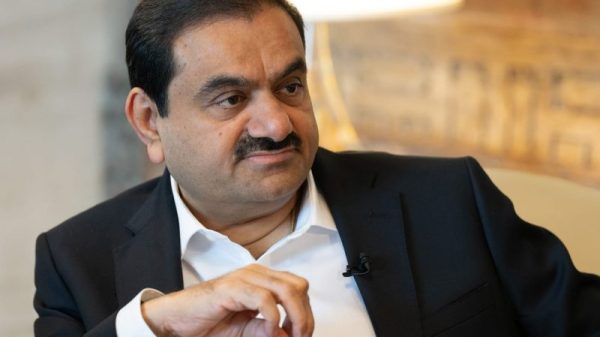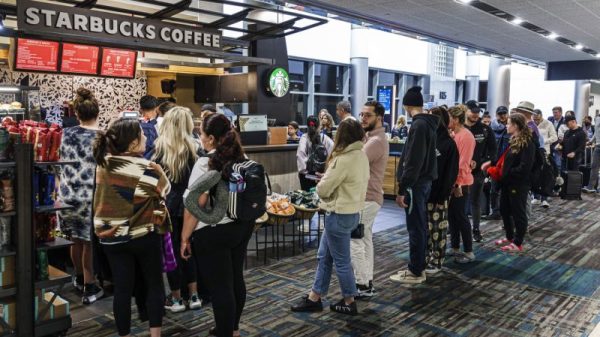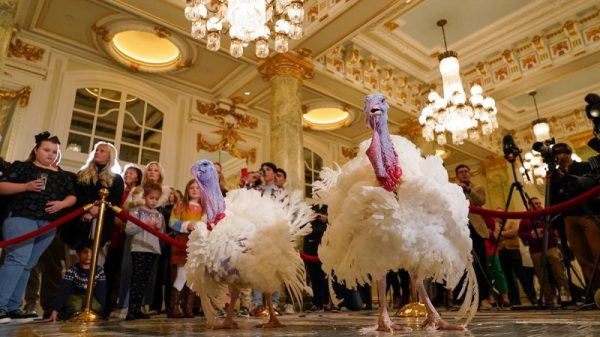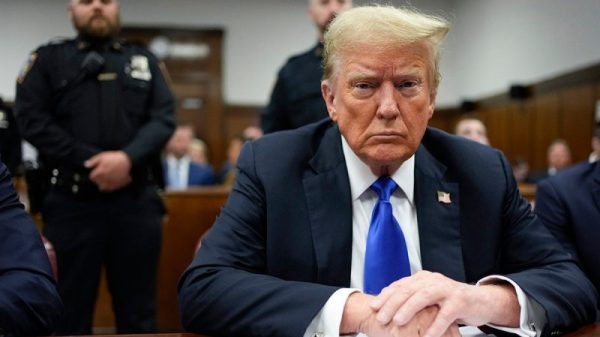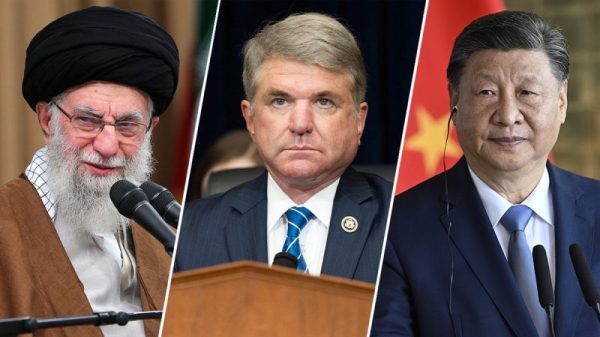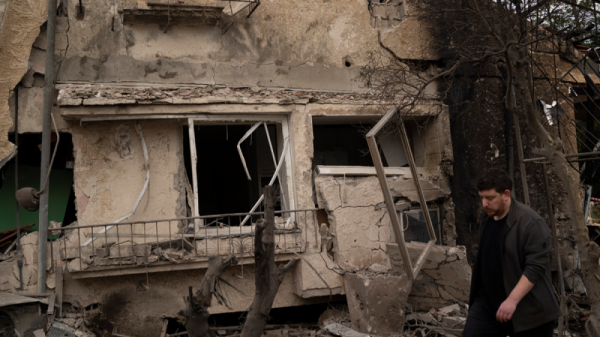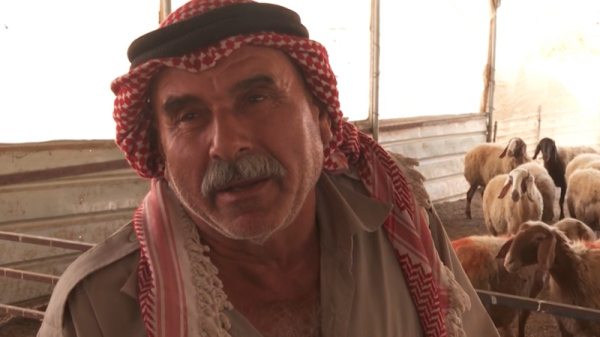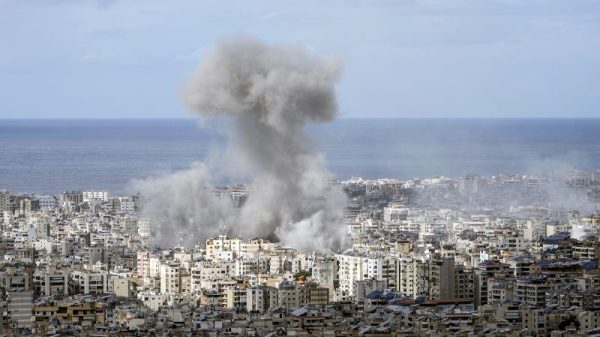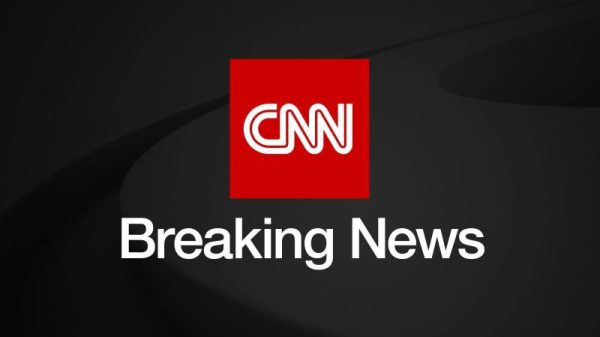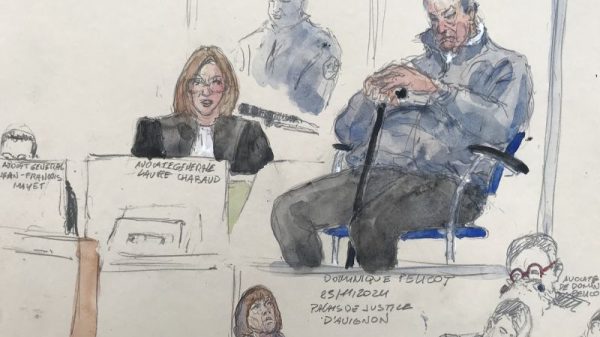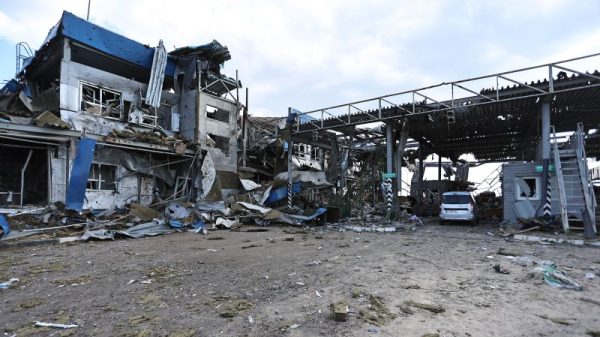Indian Prime Minister Narendra Modi once famously made a simple election promise: “good days are coming”.
To his adoring supporters, it’s a vision of a future now finally within reach should Modi and his right-wing Hindu nationalist Bharatiya Janata Party (BJP) secure an emphatic and rare third consecutive term at this month’s nationwide election.
At his rallies, tens of thousands gather in near frenzied religious devotion in support of a man whose policies they say have transformed the lives of ordinary Indians – and helped enshrine the nascent promise of social mobility in a country still riven by caste divisions.
Modi projects himself as an outsider from humble origins. Born as the son of a tea seller in a small town in Gujarat, he does not fit neatly within the often privately educated, resolutely metropolitan, English-speaking template set by many previous Indian leaders.
The 74-year-old is unmarried, has no children, and seemingly shuns expensive material possessions in favor of a simple, ascetic lifestyle.
And though little is shared about Modi the man – his private life is assiduously guarded by a formidable public relations team – his persona resonates with many.
His political rise in some ways mirrors India’s own path from a newly independent nation freed from the shackles of colonialism to a confident, secure country inching ever closer to superpower status – albeit one wracked by deep and abiding fault lines.
Modi, his opponents argue, has done little to soothe those divisions.
Religious persecution and Islamophobia have increased sharply on his watch, with many accusing the prime minister of tacitly endorsing sectarianism as a means of further bolstering his Hindu-nationalist credentials, while diverting from policy failures – such as youth unemployment, which now stands at close to 50% among 20- to 24-year-olds.
Among India’s minorities, particularly the country’s 230 million Muslims, the prospect of another five-years for a prime minister who calls himself the “chowkidar” – or watchman – remains deeply concerning.
Many don’t believe Modi is watching out for them – instead, they say they are marginalized as he fulfills his party’s dream of transforming secular, pluralistic India into a majoritarian Hindu state.
“As he goes toward seeking a third term, Prime Minister Modi has positioned himself as a head priest alongside the head of the political system … the protector of the nation (and), as the creator of a Hindu-first nation,” said Saba Naqvi, author of “The Saffron Storm: From Vajpayee to Modi.”
This seemingly potent, populist mix of economic empowerment and Hindu nationalism has proved to be a successful electoral formula for Modi, confounding longstanding social and regional voting lines.
According to 2023 Pew research, about eight-in-ten Indian adults have a favorable view of Modi, including 55% who have a very favorable view. Such levels of popularity for a two-term incumbent prime minister defy all modern conventions, both in India and throughout much of the democratic world.
“He’s done something which has not happened before in Indian politics among all our prime ministers,” said Naqvi. “He has willfully created a cult of his own personality.”
‘Many people think he is God’
As the sun sets across the Ganges, Hindu devotees bathe in the holy river’s waters and priests offer daily prayer by its banks. It’s here, in the city of Varanasi – Modi’s own constituency – that this so-called cult of personality is on full display.
Billboards with the prime minister’s face appear on the corners of roads, and saffron flags with his party’s lotus symbol are hoisted on buildings across the dusty, meandering gulleys of the ancient city.
On the streets, his party’s volunteers go door-to-door advocating for the leader.
When Modi first ran for prime minister a decade ago, he did so on a promise of infrastructure, development and anti-corruption, choosing the city of gods as his constituency – its religious symbolism the perfect backdrop for his BJP’s Hindu nationalist ambitions.
In one of Varanasi’s oldest spice markets, shopkeepers say their lives have been transformed since.
“Many people think he is God,” said father of two, Akash Jaiswal, pointing to Modi’s welfare schemes and business incentives. “We’ve never had a prime minister like Modi ever. He’s done a great sacrifice for India, for us … We want him to be prime minister forever.”
Jaiswal even praised some of Modi’s most controversial leadership moments. “India had the least casualties during Covid,” he said, when in fact the country had the third highest number of pandemic-related deaths, after the United States and Brazil, according to the World Health Organization. Modi was highly criticized for his handling of the pandemic and accused of being underprepared, as hospitals reached their limit and morgues overflowed with bodies.
The city’s BJP President, Dileep Patel, who has helped Modi with all three of his election campaigns, however, isn’t surprised by his enduring levels of popularity. To him, Modi represents India’s future.
“Today India is strong, capable, and self-reliant under the prime minister’s leadership,” he said.
Narendra Modi, in pictures
Son of a teaseller
Modi’s official party biography tells the story of a poor boy, the third of six children, whose father was a “chaiwallah” or tea seller, who’d serve customers at the local train station to support his young family
Promoted by the BJP, analysts say this tale of humble beginnings makes him relatable to hundreds of millions across the country. And it stands in stark contrast to the generations of India’s elite, urbane politicians that have historically risen to the top job.
“He comes from a poor background and that helps him understands the people of India,” said Varanasi BJP president Patel.
India’s first prime minister, Jawaharlal Nehru, was a member of the Indian National Congress, a political party that was pivotal in ending nearly 200 years of British colonial rule. His daughter, Indira Gandhi, also became prime minister, as did her son, Rajiv. All three studied overseas at Cambridge or Oxford.
The face of today’s Congress Party, and Modi’s primary opponent, is Rahul Gandhi, son of Rajiv, and an alumni of both Cambridge and Harvard.
Modi, by contrast, had a modest upbringing in the small town of Vadnagar, far from the political cut and thrust of the capital New Delhi, according to Nilanjan Mukhopadhyay, author of “Narendra Modi: The Man, The Times.”
Mukhopadhyay notes Modi was an average student at school and his marriage was arranged to a woman at 17.
Though Mukhopadhyay claims the tale of Modi’s poverty is “grossly exaggerated,” his charisma – and confidence – was evident from an early age.
“He liked acting in school plays,” said Mukhopadhyay. “He always wanted to have the lead role. If the lead role was not given to him, he would not act in the play at all.”
Modi was still a child when he was exposed to the idea of Hindu nationalism through classes at the local branch of the Rashtriya Swayamsevak Sangh (RSS), a right-wing paramilitary organization that advocates for the establishment of Hindu hegemony within India.
Founded in 1925 by Keshav Baliram Hedgewar, a campaigner who had split from Nehru’s Congress party over what he believed to be “undue pampering of the Muslims,” its central mission is to “nourish the Hindu culture,” according to the group’s website.
At 17, Modi abandoned his family and his wife, left his village and traversed India with the group in search of a spiritual awakening, according to his biography. He devoted himself to the RSS, never remarried and learned to “leave all the pleasures in life,” according to an interview he gave in 2019.
By 1972, he had become a “pracharak” for the RSS, according to his biography, someone appointed to spread their cause through meetings and public lectures.
The turning point for the young activist came in 1975, when then Prime Minister Indira Gandhi invoked what she called necessary “shock treatment” to stamp out internal unrest. She imposed a state of emergency, tightening government control, rounding up critics, censoring her opposition and silencing the press.
Detached from the demands of marriage, Modi then 25, saw an opportunity, according to his biography. He joined a movement to restore democracy to India, his profile states, marking the start of his journey to political high office.
And in the absence of a family life, many of his supporters have claimed him as part of their own, adding to his everyman appeal. “Modi is our family,” said the shopkeeper Jaiswal in Varanasi. “We are all his family.”
Entry into the BJP
Modi joined the BJP in 1987, when the fringe political party started gaining traction fueled by the rise of Hindu nationalism in India.
Considered to be the political arm of the RSS, the BJP gained prominence that decade when it advocated for the destruction of the Babri Masjid, a 16th-century mosque believed by Hindus to have been built on the site of the birthplace of the religion’s revered Lord Ram.
And it was thrust into the mainstream in 1992, when – spurred on by members of the BJP – Hindu hardliners attacked the mosque, ripping it apart with their hands, and setting off a wave of sectarian violence that reverberated through the nation.
One of the BJP’s founders Lal Krishna Advani – widely believed to be the brains behind the mosque’s destruction – saw a leader in Modi, giving him immense responsibilities within the party.
No politician “brings the experience that Modi does,” Naqvi, the author, said last month from her home in New Delhi, referring to his various political roles.
Modi thrived under Advani’s guidance, working his way through the ranks of the BJP. In 2001, he was appointed chief minister of the wealthy state of Gujarat.
Under Modi’s governance, the state introduced a wave of infrastructure, industry, and innovation to its arid landscape – making the “Gujarat model” synonymous with development and government efficiency.
His tenure was not without controversy.
Violence erupted in Gujarat in 2002 when Hindus blamed Muslims for setting fire to a train in an incident that killed dozens of Hindu pilgrims and sought revenge by attacking Muslim-owned homes and stores.
More than 1,000 people – mostly Muslims – were killed, according to government figures. Critics accused Modi of being complicit in the violence, alleging that his administration failed to prevent or adequately respond to the unrest.
Modi faced international repercussions in its aftermath, with the United States banning him from entering the country for many years over concerns about human rights violations.
He vehemently denied any wrongdoing, and the Supreme Court cleared him of complicity. Months after the violence, he was re-elected with a roaring majority – the “first evidence” of his cult following, said Naqvi, the author.
But the polarization of communities deeply divided the nation, leaving scars that persist to this day.
Political scientist Christophe Jaffrelot suggested events in Gujarat made Hindu nationalists more confident. “But Modi himself is so insecure, he cannot face any questions,” he said.
Modi infamously walked out of an interview in 2007, when journalist Karan Thapar pressed him on his role in the Gujarat riots. He rarely gives interviews, and has not held a solo press conference since becoming Prime Minister.
“He cannot face debate,” Jaffrelot said.
Becoming prime minister
Modi’s “Gujarat model” had become a blueprint for India and in 2014, the BJP won by a landslide, crushing the Congress – the party’s worst defeat in more than 100 years of its existence.
Since entering into office, Modi’s administration has upgraded the country’s aging transport network, building highways connecting small villages with major cities. His administration has built new power plants and maritime projects, and, according to recent remarks from Modi himself, subsidized the construction of some 40 million concrete homes for improvised families.
The administration also bolstered the country’s military capabilities. And it’s invested money in sports, science and high-end technology – letting India thrive on the world stage.
But for some observers, a troubling pattern has also emerged.
“He was able to popularize Hindu nationalistic politics and their ideology,” said Mukhopadhyay, the writer and unofficial Modi biographer.
Modi appointed Hindu nationalists to top positions in government, giving them the power to make sweeping changes to legislation, instilling a sense of fear among the 230 million Muslims living in the country.
In 2019, he roared through polls yet again – this time on a more clearly defined ticket of Hindu supremacy.
He abrogated the special autonomy of Kashmir – India’s only Muslim-majority state – bringing it under the direct control of New Delhi. His government implemented a controversial citizenship law considered by many to be discriminatory against Muslims.
He built the Ram Temple in Ayodhya on the site of the destroyed mosque, reviving painful memories of 1992’s bloodshed for many Muslims, but brought a sense of pride for millions of Hindu devotees.
And to his more vocal critics, Modi’s economic policies are also open to question. Despite India now boasting an economy that is projected to grow 7.3% this fiscal year – the highest rate among major global economies – accusations persist that Modi has failed to create enough jobs, or adequately bridge the gap between the country’s billionaire class and its most improvised.
“He has made the poor, poorer. He has increased inequalities,” said Jaffrelot, in reference to the country’s wealth gap, which according to a recent study is more unequal than it was during British rule.
On the diplomatic front, he’s grown closer to the US, been wooed by Australia and courted by the United Kingdom.
At the same time, Modi has kept India’s historically close relationship with Russia — snapping up huge amounts of Moscow’s oil despite the Ukraine invasion — and he maintains relations with both Israel and other Middle Eastern countries at a time of increased polarization.
And an overwhelming majority of Indians appear to put their weight behind his leadership. A recent Morning Context poll ranked Modi as the world’s most popular global leader, with an approval rating of 76% at home.
“He’s the number one figure right now. He’s the only candidate for prime minister,” Naqvi said.
At a Modi rally in the northern city of Ghaziabad earlier this month, thousands of supporters thronged the large grounds as he walked on stage. Some dressed as the Indian god Ram, others head to toe in saffron, the official color of his BJP, their triumphant cries reverberating through the air.
In the city of Meerut in the northern state of Uttar Pradesh, a Modi supporter says she is voting for him because he is “unlike any other politician in the world.”
“I have put Modi’s poster in my son’s room,” Raniva, who is 36 and goes by one name, said. “The way (he) is doing so much for the country, I hope my son also does good work for the country.”
On the streets of the capital New Delhi, opinion is more divided. “Nowadays there is so much fighting between Hindus and Muslims. We all know why,” said one rickshaw driver sitting outside the city’s famed Jama Mosque.
With Modi widely expected to comfortably win the upcoming election, some analysts say they have genuine fears about the future of the country’s democracy.
“I definitely see a decline in the quality of democracy in the country,” said Mukhopadhyay. “I see greater insecurity and marginalization of Muslims in India. That’s not a very rosy picture. But it’s the likely path India is going to take.”






